 Written by Mike Price, OT
Written by Mike Price, OT
Most people are quite familiar with the five main senses: taste, smell, sight, hearing, and touch. But did you know two additional senses greatly play into our day-to-day functioning? Proprioception and the vestibular sense represent the sixth and seventh senses in the human body that contribute to spatial awareness and orientation. Without them, we would encounter continuous dizziness, difficulty finding our balance, and a poor sense of overall coordination.
The brain is constantly bombarded by input from the various sensory systems. Think of walking down a city block: your eyes are sending your brain visual information to avoid stepping on cracks, your ears are sending auditory information to avoid getting hit by a cab and your nose is sending information about all the good and bad scents surrounding you. With so many inputs from various systems, it takes a lot of energy to sort through the signals, process them, and react accordingly.
Given the complexity and the many unknowns of proprioception and vestibular sense, today, we’re breaking down the sixth and seventh senses, discussing how they play into daily function, and sensory treatments to consider when associated issues arise.
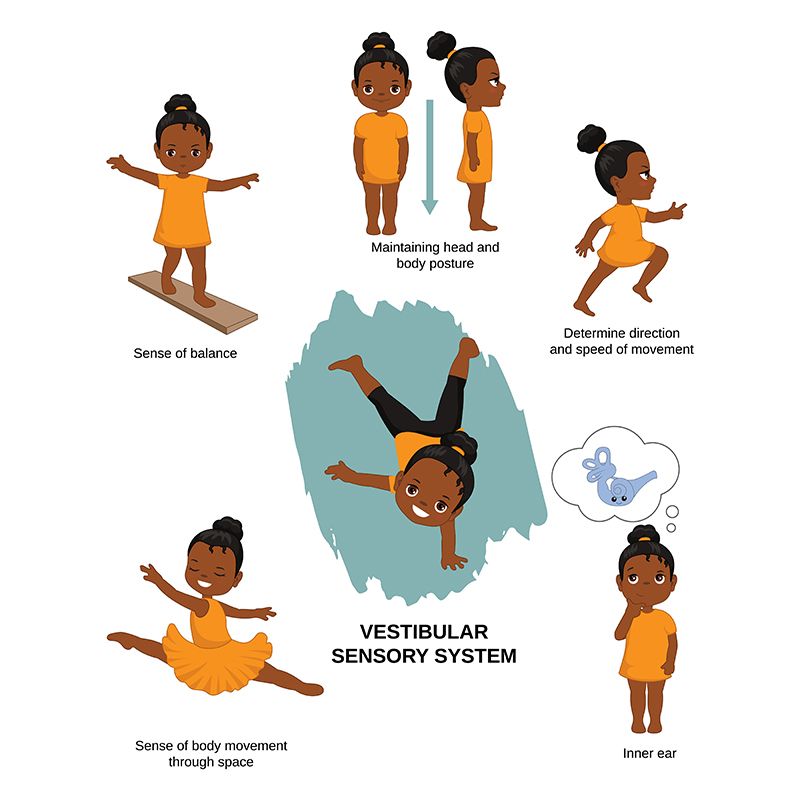
The vestibular system is an intricate network that begins within the inner ear. It contributes to our balance and spatial orientation and helps our body auto-correct to changes in movement so we don’t fall over when our head tilts or turns. The vestibular system is integral for postural reflexes and eye movements and although we are generally unaware of vestibular activation, it is continuously sending signals to the integrative centers in our brains. When the vestibular system is damaged, people will often report dizziness, lightheadedness, and clumsiness. Abnormal processing within this system results in a loss of spatial orientation and trouble focusing one’s eyes when the head is in motion.
Proprioception is another integral sense that contributes to body awareness. Its sensory organs are located within our muscles and joints sending input to our brains about muscle force, movement, and effort. It plays an important role in sensory processing and abnormalities of this system can lead to poor posture, poor motor control, and difficulty regulating force outputs during movement.
Although rarely discussed, proprioception and the vestibular sense are both key components of the overall sensory system. Without them, movement, body awareness, and spatial awareness can all be affected. For those dealing with sensory processing disorders, it's extremely important to assess these systems in addition to the more familiar five senses of taste, smell, vision, hearing, and touch. In fact, in individuals with sensory processing disorders (SPD) and Autism Spectrum Diagnosis (ASD), many symptoms that make life challenging are related to abnormal functioning within the proprioceptive and vestibular systems.
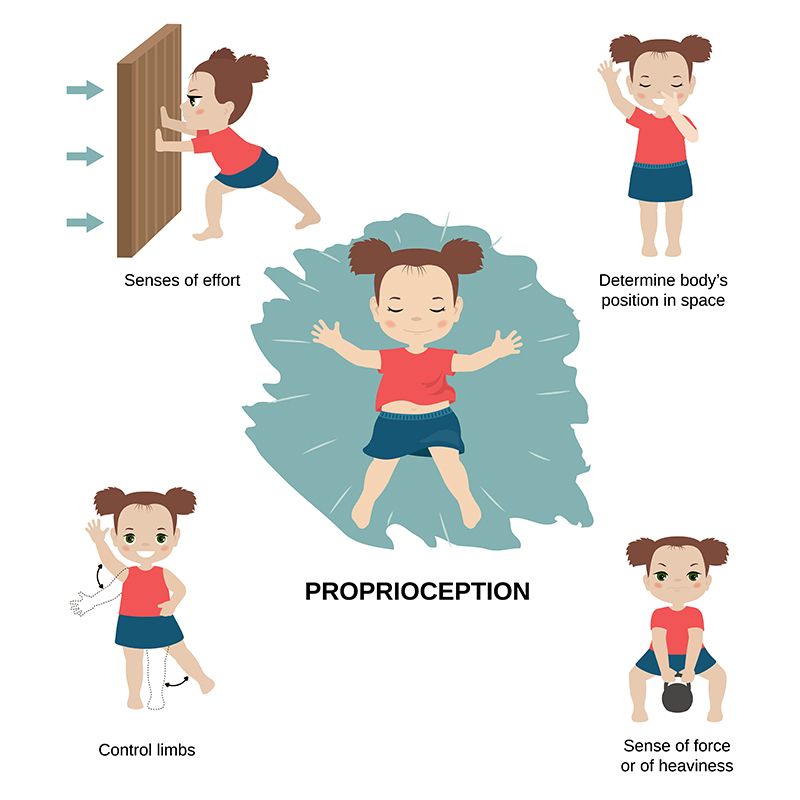
Some commonly seen signs of proprioceptive and vestibular processing difficulties include clumsiness, idiosyncrasies with walking, poor posture, pushing down hard on pencils or similar objects, and poor hand-eye coordination. They may be running into the walls more often or complain of dizziness or a feeling of lightheadedness.
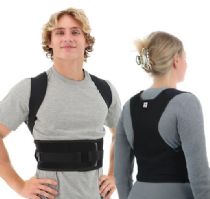 | Perfect Posture Corrector With Adjustable Waistband and Breathable Mesh from Core Products View Product |
While it is common to find proprioceptive and vestibular processing issues in children, they also affect adults. When assessing for dysfunction, the warning signs in adults are similar to those found in children and include balance issues, poor body and spatial awareness, dizziness, and lightheadedness. Note that many adults may have subconsciously developed coping strategies over time that can mask their underlying dysfunction.
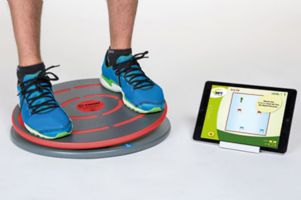 | Togu Challenge Disc for Improved Balance and Coordination View Product |
When it comes to sensory processing disorders, the general goal of treatment is to help individuals manage versus cure their underlying dysfunction. While it is not likely that sensory processing challenges can disappear completely it is possible to learn coping strategies that make day-to-day living more comfortable and streamlined. Treatment takes time, professional guidance, and commitment from both the individual and his or her support system.
Strategies to improve vestibular and proprioceptive processing are multi-faceted with different interventions showing variable efficacy for different individuals. Self-regulation is a first approach and often an effective tool for those dealing with sensory processing disorders. Whether you are practicing yoga, meditation, or grounding, calming exercises can help improve the mind-body connection and improve individual detection of systemic changes related to vestibular and proprioceptive inputs.
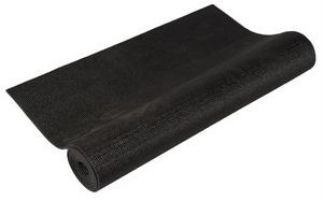 | j/fit Premium Sticky Yoga Mat - 68in x 24in x 1/8in Thick View Product |
A second strategy often implemented is the use of weighted products like vests or blankets. Used to manage a variety of sensory input challenges, weighted products can particularly help with coordination and balance issues by providing individuals with a continuous source of input against a large surface area.
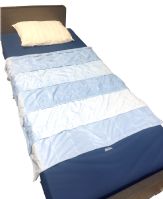 | Adjustable Weighted Blanket View Product |
Next up, stress balls. Although seemingly mundane, stress balls can help improve proprioceptive input processing by allowing people to explore their body’s natural reaction to varying efforts or force exerted on an object. This action primes the brain for subsequent, similar input and helps the user gain insight into how their system might react.
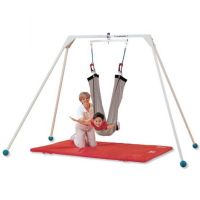 | Tumble Forms II Deluxe Vestibulator II System View Product |
A final strategy is rocking chairs and swings. These products can greatly impact the processing of vestibular information, by putting the body through a variety of positions and movements. Performing these movements in a safe and familiar environment allows the user to explore the inputs more confidently and establish security before encountering similar movements in a less familiar environment.
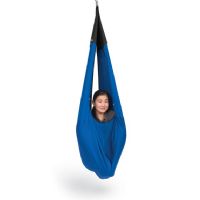 | Adult Cuddle Swing - Cocoon Sensory Therapy Swing for Autism View Product |
Our sensory system is a complex and intricate network of structures that allow us to take in, process, and respond to daily inputs. Collectively, our senses contribute to our vision, our balance, and our body awareness amongst other key tasks. Unfortunately, similar to any system, difficulties with this system can arise. Luckily, when processing goes awry, several effective strategies can help users better handle their challenges and retrain their brains.
If you or someone you love is interested in exploring tools to manage their sensory dysfunction better check out our full listing of sensory products here. While you’re exploring, browse through our expert-curated blog, Caregiver University, and make your medical buying decisions with confidence and ease.

Co-Founder of Rehabmart and an Occupational Therapist since 1993. Mike has spent his professional career working in multiple areas of Occupational Therapy, including pediatrics, geriatrics, hand therapy, ergonomics and inpatient / outpatient rehabilitation. Mike enjoys writing articles that help people solve complex therapeutic problems and make better product choices.